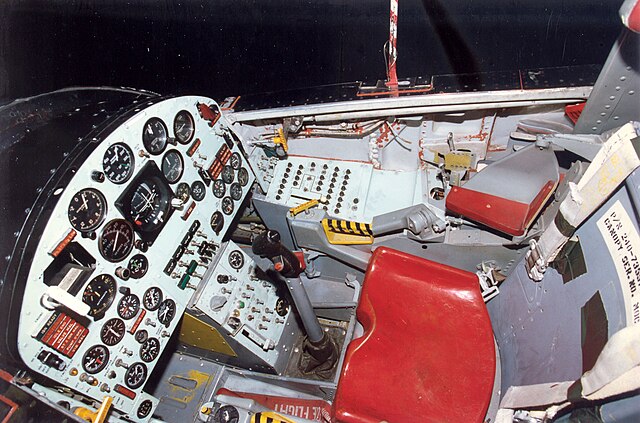The North American X-15 is a hypersonic rocket-powered aircraft operated by the United States Air Force and the National Aeronautics and Space Administration (NASA) as part of the X-plane series of experimental aircraft. The X-15 set speed and altitude records in the 1960s, crossing the edge of outer space and returning with valuable data used in aircraft and spacecraft design. The X-15's highest speed, 4,520 miles per hour, was achieved on 3 October 1967, when William J. Knight flew at Mach 6.7 at an altitude of 102,100 feet (31,120 m), or 19.34 miles. This set the official world record for the highest speed ever recorded by a crewed, powered aircraft, which remains unbroken.
North American X-15
X-15 after igniting rocket engine
X-15A-2, with sealed ablative coating, external fuel tanks, and ramjet dummy test
Cockpit of an X-15
A rocket-powered aircraft or rocket plane is an aircraft that uses a rocket engine for propulsion, sometimes in addition to airbreathing jet engines. Rocket planes can achieve much higher speeds than similarly sized jet aircraft, but typically for at most a few minutes of powered operation, followed by a gliding flight. Unhindered by the need for oxygen from the atmosphere, they are suitable for very high-altitude flight. They are also capable of delivering much higher acceleration and shorter takeoffs. Many rocket aircraft may be drop launched from transport planes, as take-off from ground may leave them with insufficient time to reach high altitudes.
Messerschmitt Me 163 Komet, the only operational rocket-powered fighter aircraft
Opel RAK.1 - World's first public manned flight of a rocket plane on September 30, 1929.
A Yokosuka MXY-7 Ohka replica at the Yasukuni Shrine Yūshūkan war museum
The X-15's XLR99 rocket engine used ammonia and liquid oxygen.







